“In December 2015, LIFT and Yoma Bank signed an ambitious partnership with the aim to increase agricultural productivity and improve rural livelihoods in Myanmar. Through a combination of risk sharing and technical assistance, LIFT provided Yoma Bank with the incentives and tools to develop and launch new financial products for rural SMEs [Small and Medium sized Businesses], smallholders, and other agri[cultural] value chain players.” – LIFT Semi Annual Progress Report, 2016-2018
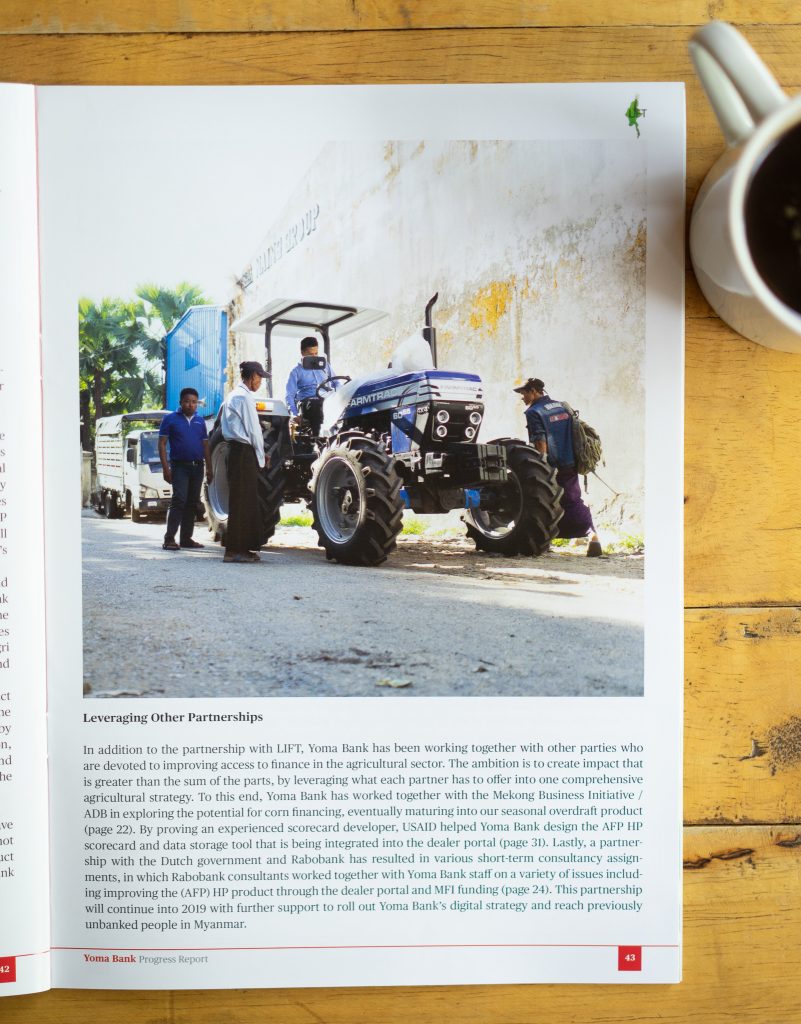
As the lead UI/UX designer of Yangon, Myanmar-based Yoma Bank’s design team, my typical day job focused on crafting software designs and building a team for the bank’s foray into digital experiences in support of the bank’s mission to bring the country’s un- and under-banked citizens into the formal financial space.
It was a nice break from the norm, one day, when a LIFT associate approached me for some photography for the organization’s semi-annual report. The assignment had two parts. The first, and more complex, was to ride along one of the bank’s associates for a little qualitative design research and to photograph the tractor-buying experience for the bank’s hire-purchase online-loan application process. The second was to take some photographs for the bank’s online bank account application.
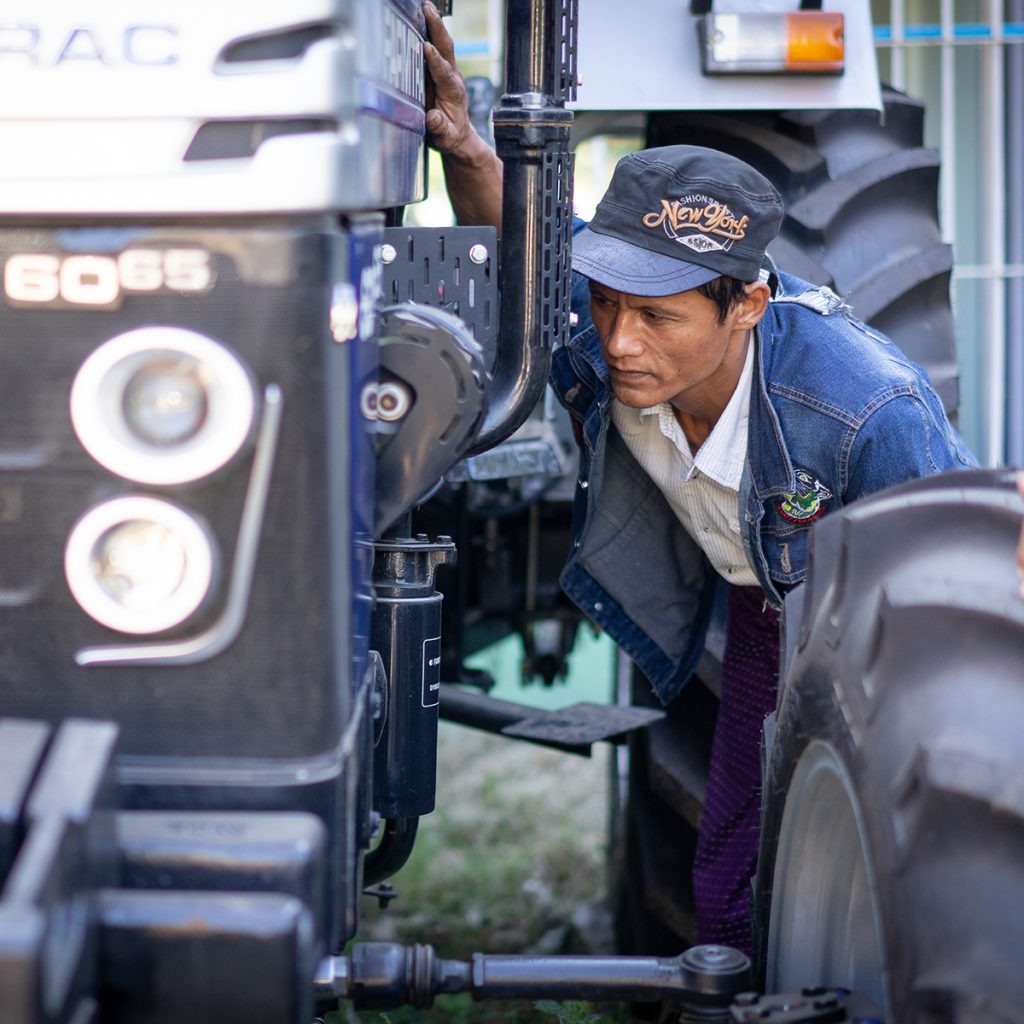
As a photographer…
This assignment was part of a larger brand story for Yoma Bank. The bank’s digital transformation investments had a huge focus on human centered design, and my goal as a photographer was to tell the stories of this more holistic customer-centric strategy. That meant capturing more than the digital product screens themselves: we needed to capture them in use, and in context.
Hire Purchase Agricultural Loans in Myanmar
The Myanmar economy is still in the early stages of development, and much of the country’s productivity comes from its agricultural sector. With an eye toward boosting economic output at the ground-level, organizations like LIFT structure investment tools to help poor farmers buy the equipment they need to grow their agricultural output.
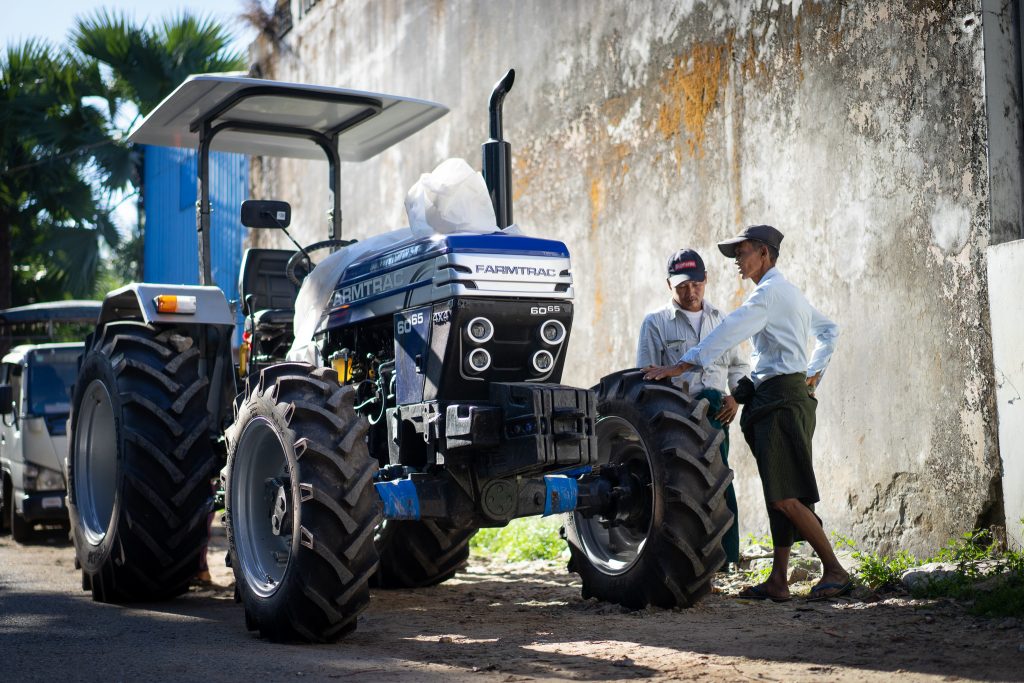
This is where Yoma Bank’s Hire-Purchase Portal came in. Designed by my colleagues Thuya Ko Ko Lwin and Bart van Kranenburg and crafted by one of Yoma Bank’s digital teams, the HP Portal is a quick way for a farmer to get a loan at the dealer without having to visit a branch to do paperwork.
This is a huge help for farmers who often travel hours to get to a city where tractor dealers are located. Because banks are only open on weekdays and close at 3pm, often farmers and those that accompany them from their local village would have to spend the night in the city before heading home the next day.
For most farmers, the cost of a tractor represents several times their annual income. They often come with a local expert from their village, family members, and backpacks full of cash for the down payment. They also have low levels of literacy, so the entire sales experience involves a lot of group communication and alignment before everything is signed. For many, the idea of using a tablet to get a loan is an incredibly foreign experience. This process, however, creates a significant improvement in the process for those who use it.

As a photographer…
While the bank’s day to day work may be highly technical, it is at the human level that success is measured. Yoma Bank has invested in bringing “human-centered design” into the core of its culture, and my goal as a photographer was to capture the human aspects of the tractor-buying experience. This human-centered story took three forms.
First, we wanted to capture the physical environmental aspects of the experience. The LIFT report would be read by both Burmese and foreigners alike, and while these environments may look natural to Burmese eyes, some aspects appear quite exotic to foreigners, helping ground photos with a unique sense of place. Elements such as the commonly worn Burmese ‘longyi,’ professional sales people wearing flip flops, a plate full of watermelon with shared forks, or giant stacks of cash used for down payments remind the viewer that this interaction isn’t occuring just anywhere – it is happening in Myanmar.
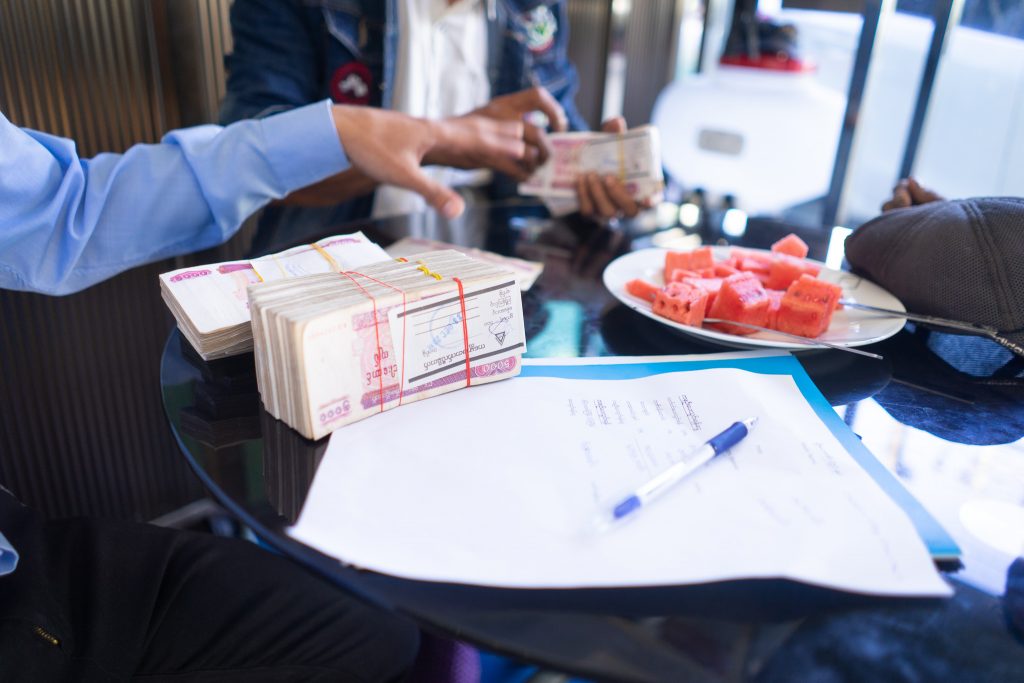
With an established sense of place, the photography enabled us to set the context for the product story. Good design is about “fit” in context. To tell the story of good design though photography, we must capture the elements of context.
A loan application in this context is more than a screen, it is a physical experience. The tractor needs to be inspected by the buyer. Photos of tractors need to be documented by the dealer. Terms need to be agreed to. Credentials viewed and documented. All of these actions take place in an environment that contains and facilitates them. The human story also speaks to the roles people play – knowledgable friends from the village accompany the buyer for knowledge and support. The dealer educates the buyer about the loan and helps with the process.
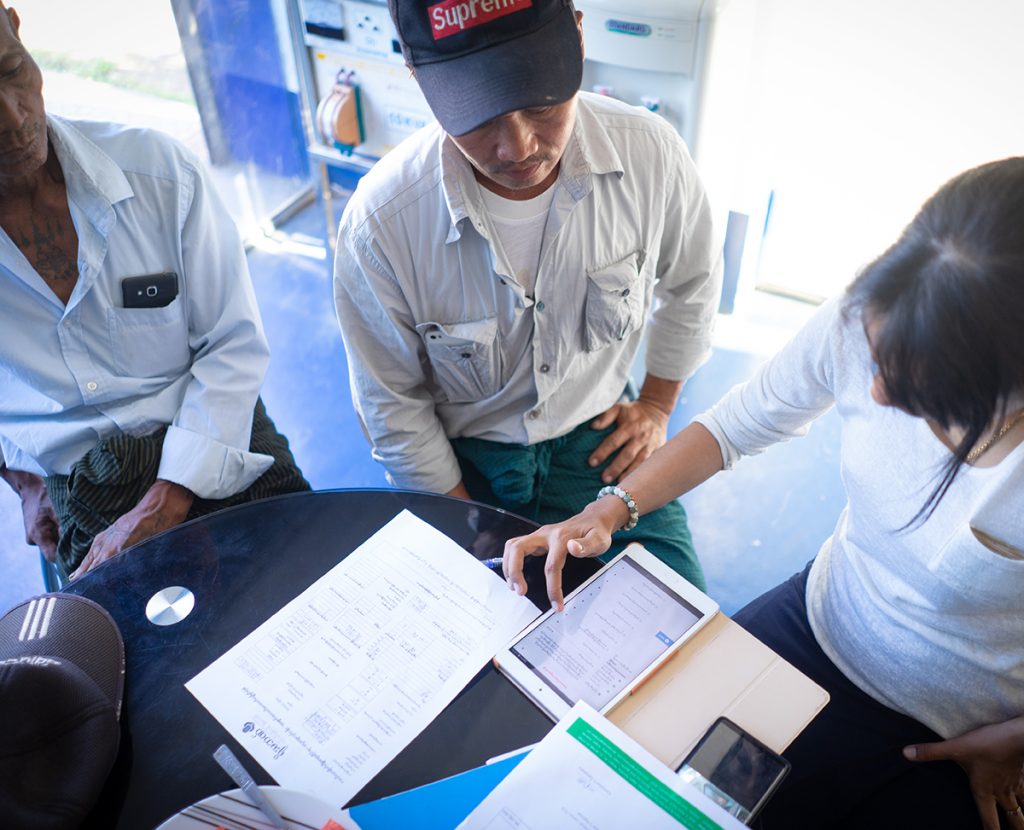
Third, with the sense of place and context established, we tell the story of the product experience itself. In this case, the bank provided dealers with a digital tablet and a special interface for the loan application. These were considered decisions – the tablet equips dealers to seamlessly move through the loan process. They can take photos with their phones and send them to the application. The tablet’s size enables them to set it on the table giving the buyer a sense of transparency for the entire application process. It was a choreography meticulously thought through by Thuya and Bart – a choreography we wanted to capture in the imagery that would share this story.
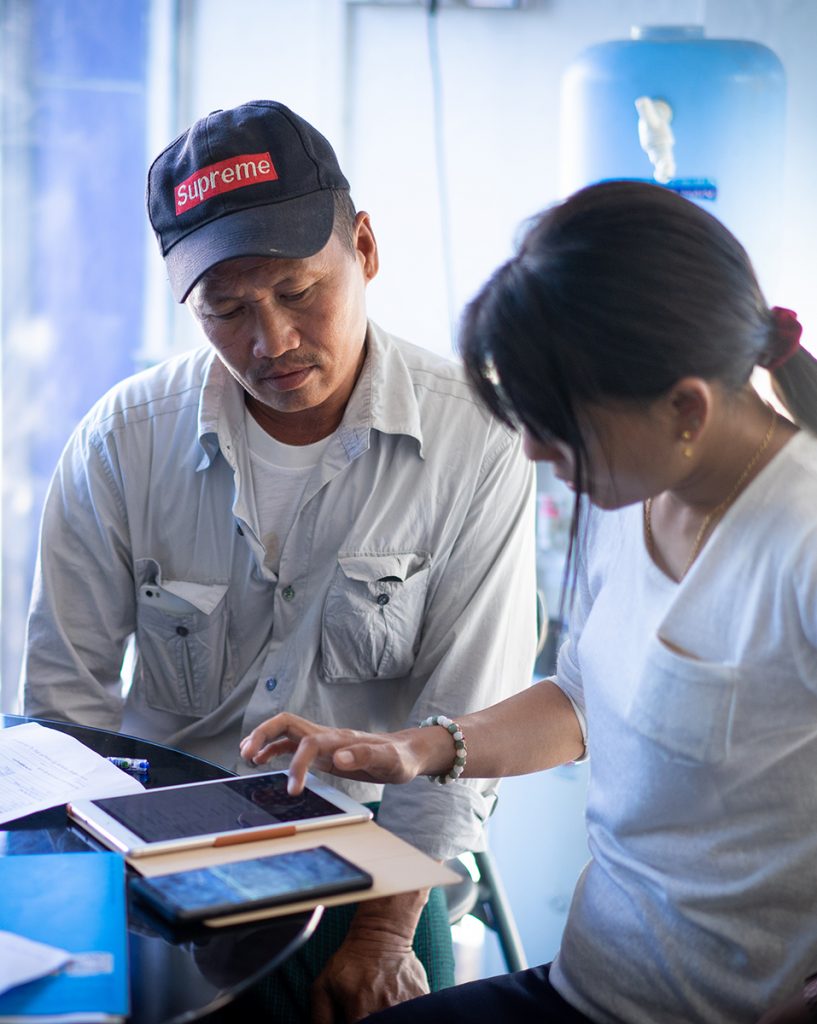
Online Bank Account Application
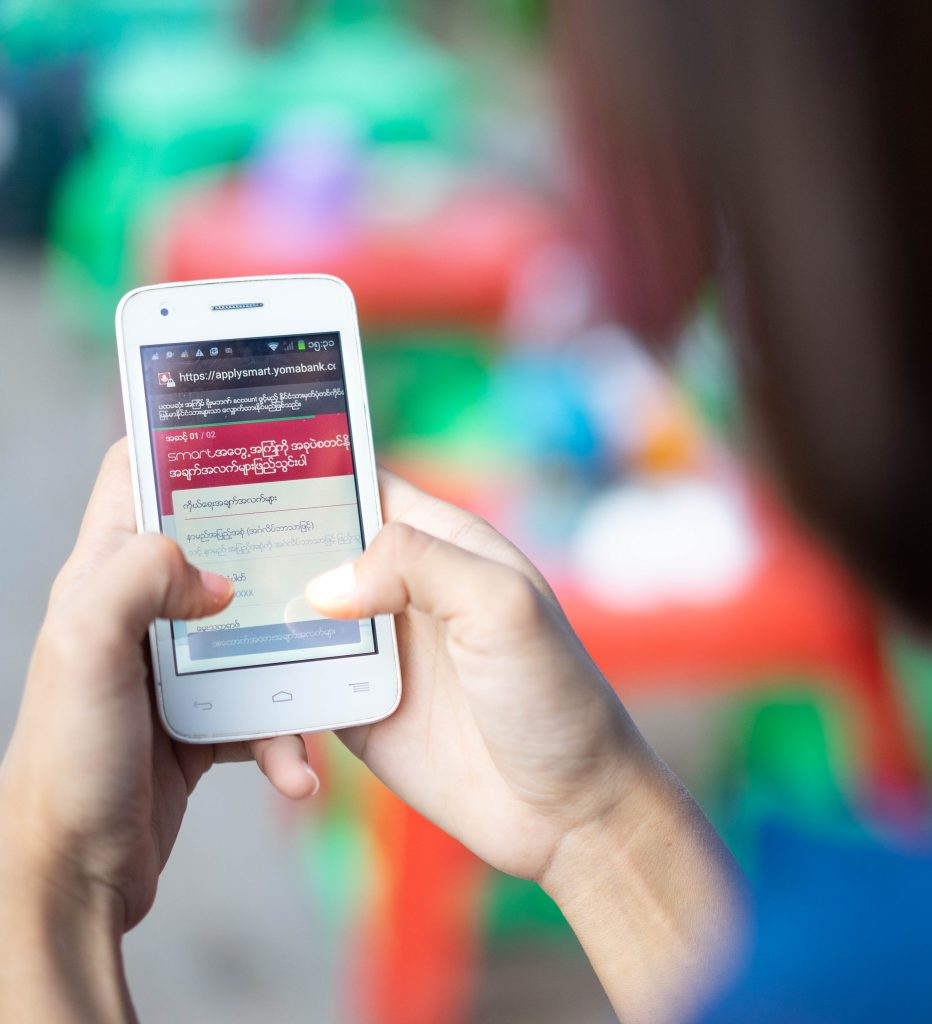
The second photography task was to capture the sign-up process for Yoma Bank’s online account sign-up. Because the bank has a limited number of branches, it has focused heavily on digital channels as a means to grow. LIFT’s annual report wanted to capture and describe this process as well.
Online sign-up and interaction is a huge part of making banking accessible for the un- and under-banked population. To tell this story, I wanted to avoid sterile, stock photography, so I decided to get out of the office to shoot the process in a realistic environment.

As a photographer…
My colleague, Su Yee Yee Hnin, would act as a model for this shoot. We chose some of the outside street-food stalls to capture the images. The colorful plastic furniture created a nice background effect, and this environment helped us situate the photos in a more realistic for the bank’s customers.
From a photography perspective, this represented a few challenges. During part of the process, the customer captures a photo of her national ID card, and in another part of the process takes a selfie with it to verify ownership. We wanted to show this part of the process, but since we were photographing Su Yee’s real ID card, we needed to make sure that the actual information on the card was illegible.
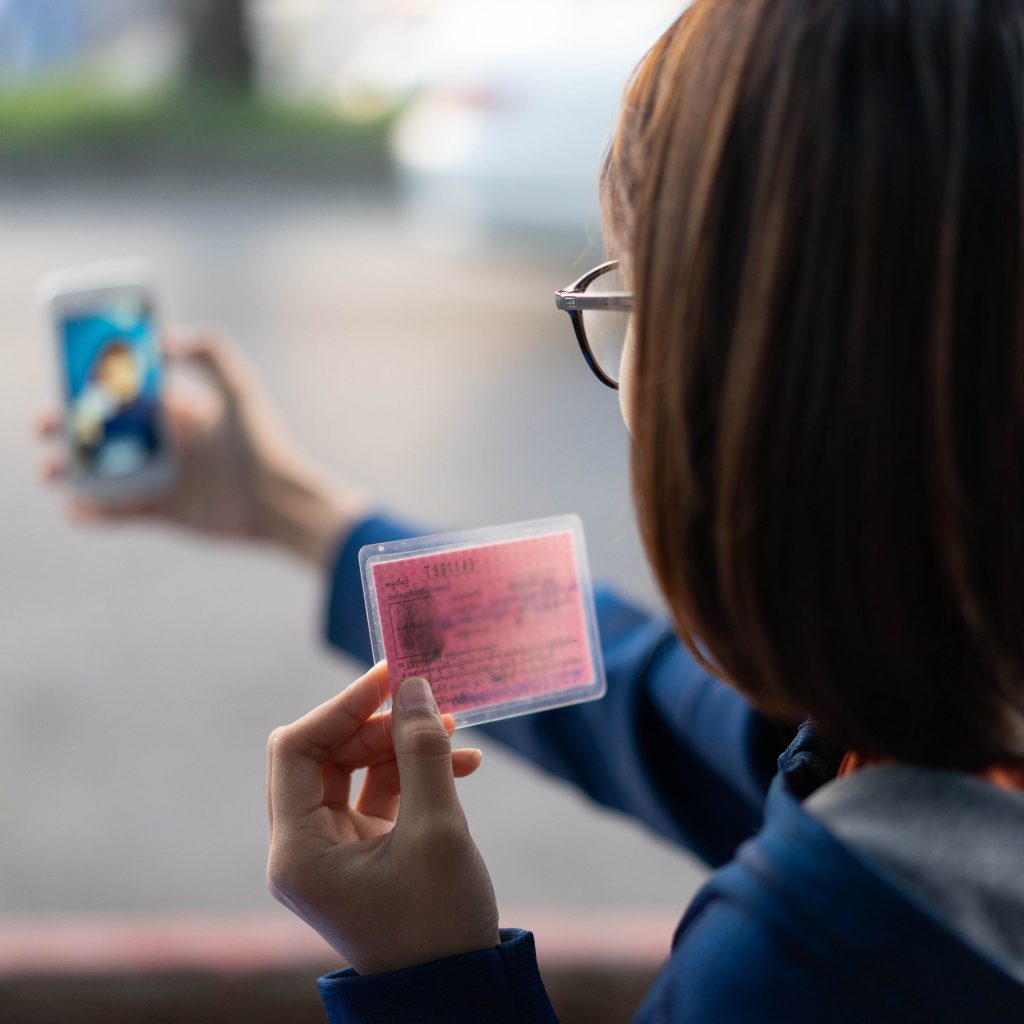
Shooting with a shallow aperture, I staged photos that would naturally blur the text on the ID card. Later, I increased the blur in photoshop to the point that nobody could read the text.
Balancing the lighting on phone screens was another challenge that required a bit of post-production on the photographs. These shots also require a lot of un-realistic phone-holding to properly frame the shots. By staging my model, the phone, and the background, I was able to get the elements needed to tell the story, even if in real life it looked a little funny.
Summing Up
The LIFT and YomaBank stakeholders were extremely happy how the photographs turned out. For organizations like these, telling stories to investors about the impact that they are creating is important. These organizations help improve people’s lives, and the narratives they take back home help their operations stay sustainable.
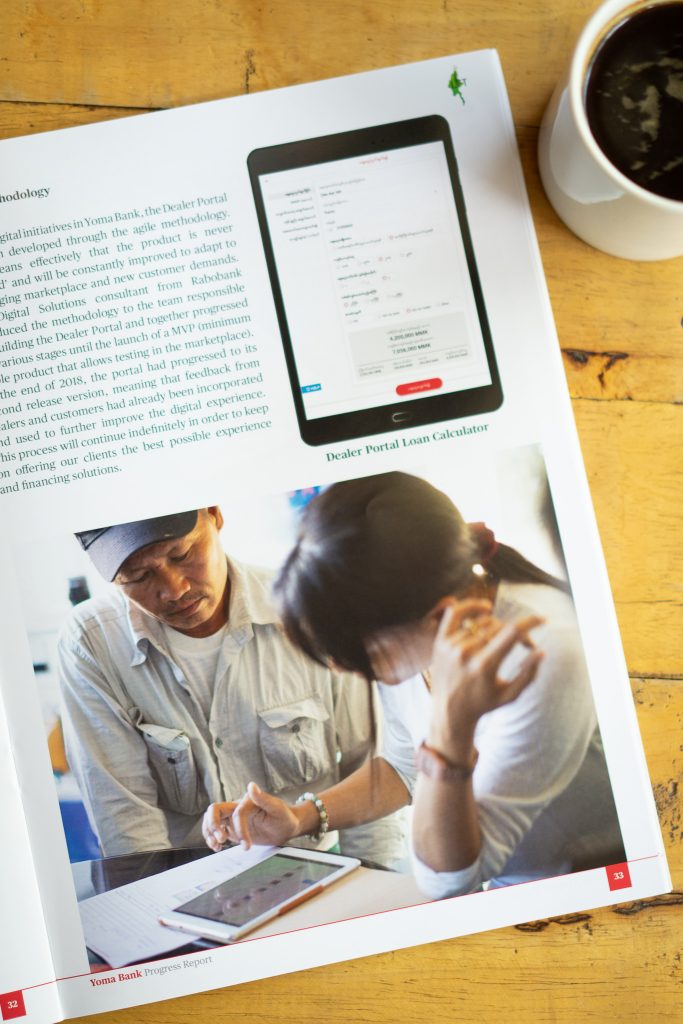
Personally, it was a lot of fun to ride-along to a tractor sale in Yangon, and to use photography to tell the stories of my designer colleagues and the organizations that they support. I hope to have more opportunities like this in the future!
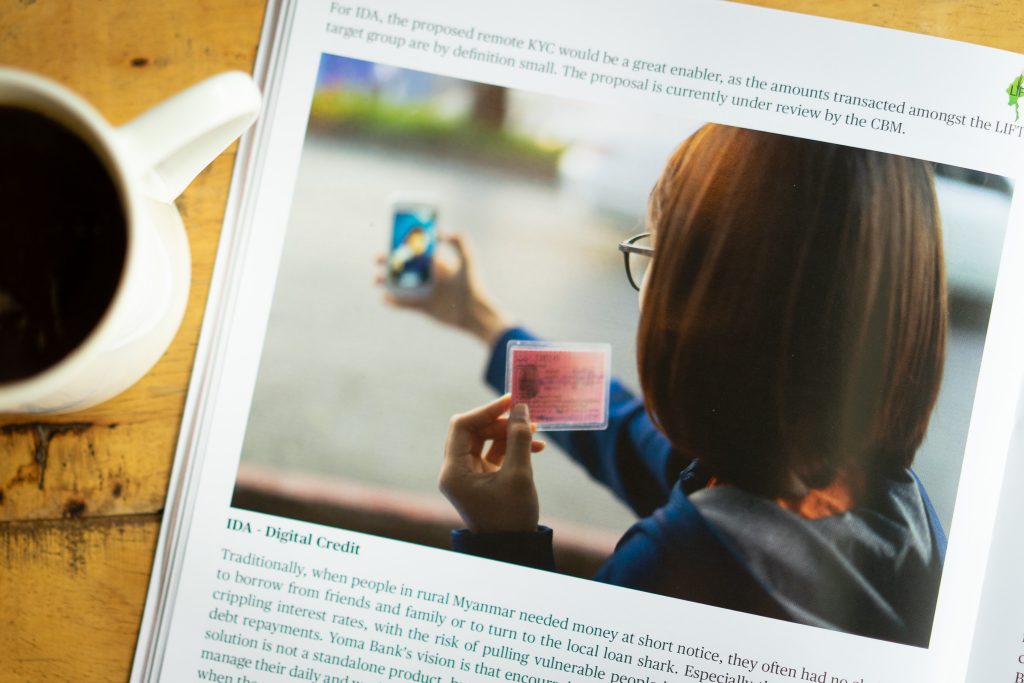
Comments are closed.